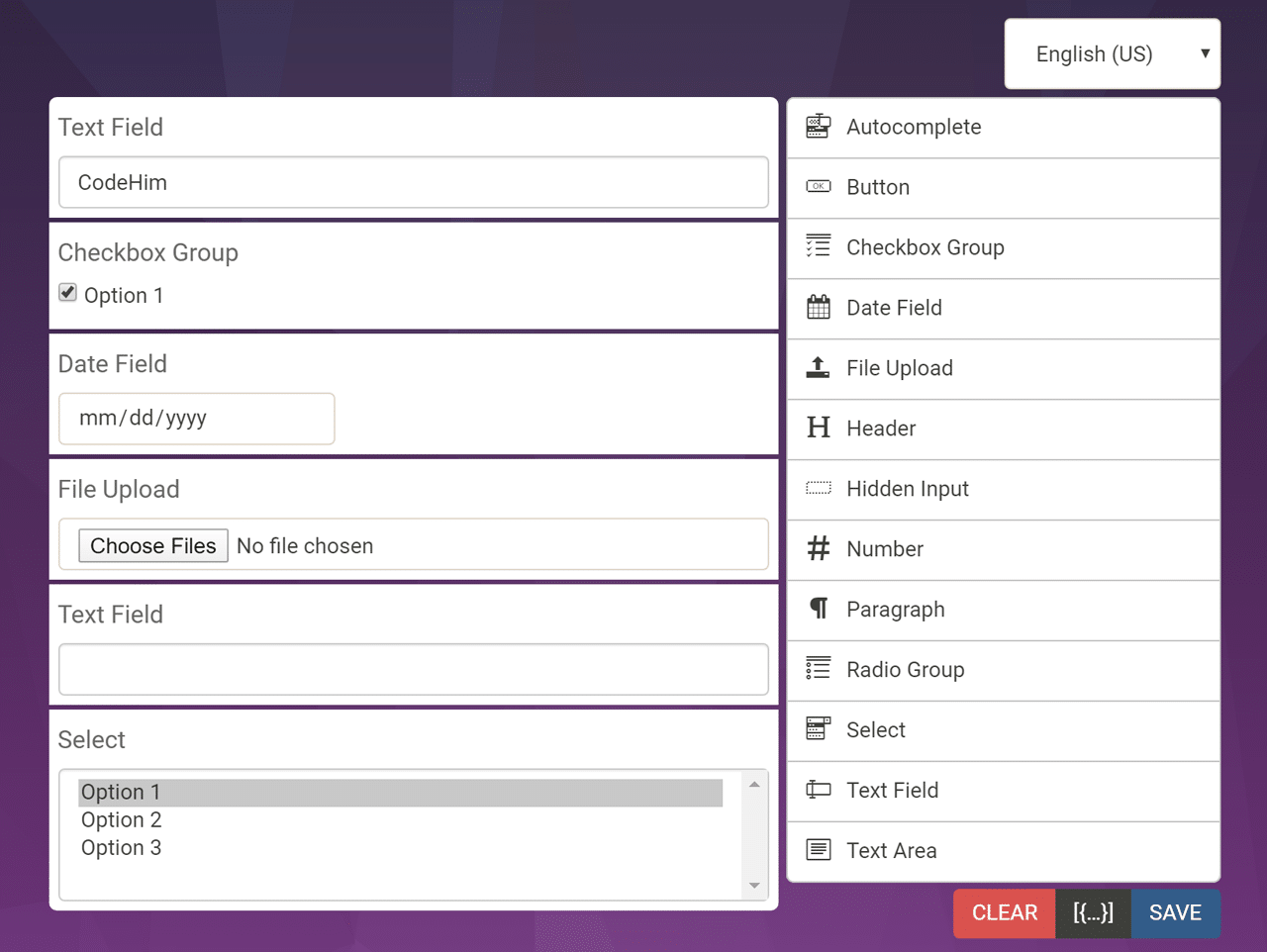

Form.io provides OAuth authentication and lets users log in using popular identity providers such as Google and Facebook. This HTML form creator offers role-based permissions for users and forms. It is self-hosted, multilingual, and multi-tenant software.
#Bootstrap 5 form builder free
In this blog post, we will explore this bootstrap form creator along with its setting up process on localhost by covering the following points.įorm.io is a free open source form builder. In the recent past, we published an article that covered the Top 5 Open Source Online Form Builders in the year 2020. Form.io is an open source bootstrap form creator that provides form building and data management capabilities. Now, it becomes a hassle to build, manage these forms and the submission data. There are many websites that may contain many forms such as contact form, complaint form, customer feedback form, admission form, and more. However, corporate sectors use online forms to fulfill needs related to data collection.

Next, data management is another critical task and it demands immense attention. Therefore, the amount of data depends on the reach to the relevant audience. On the other hand, enterprise organizations tend to collect customer’s data about their products and services. Sometimes it is about providing services and sometimes it is about collecting data or feedback. This engagement could be either physical or virtual. In the fast growing business needs, there are a lot of operations that directly belong to the public dealing and engagement. Formio is self-hosted, API driven, provides forms and data management. Roll Number: Name: Submit function validateFormWithJS () function.Build task-specific and customizable forms using a drag and drop HTML form builder. The following example shows using JavaScript to validate a form:


Developers generally prefer validating form data through JavaScript because its data processing is faster when compared to server-side validation, however front-end validation may be less secure in some scenarios as a malicious user could always send malformed data to your server. JavaScript offers an additional level of validation along with HTML native form attributes on the client side. Similarly, a roll number can only be entered if it's 10-20 characters long.įorm Validation is important to ensure that a user has submitted the correct data, in a correct format. With these validation checks in place, when a user tries to submit an empty field for Name, it gives an error that pops right in the form field. So, a form using this attributes may look like: maxLength: Specifies maximum length for the text data string.minLength: Specifies minimum length for the text data string.type: Specifies the data's type (i.e a number, email address, string, etc).required: Specifies which fields must be filled before submitting the form.JavaScript-based: Validation that's coded with JavaScript.īuilt-in Form Validation Using required, type, minLength, maxLength.Built-in: Uses HTML-based attributes like required, type, minLength, maxLength, pattern, etc.Though both of these types are equally important, this guide will focus on client-side validation only.Ĭlient-side validation is further categorized as: Server-side: Validation is done on the server.Client-side: Validation is done in the browser.Form validation also ensures that the provided information is in the correct format (e.g. : Represents a clickable button that's used to submit the form data.Ī process that checks if the information provided by a user is correct or not.Input types can be text, checkbox, email, radio, and more. It depends significantly on the value of the type attribute. : The form element that is widely used to structure the form fields.Labels aid accessibility, especially for screen readers. : An element that defines the label for other form elements.method: Specifies the HTTP method, i.e., GET or POST used to send data while submitting the form.It's generally a URL (an absolute URL or a relative URL). action: An attribute that specifies where the form data is sent when the form is submitted.The HTML tag acts as a container for different elements like text field and submit button.


 0 kommentar(er)
0 kommentar(er)
